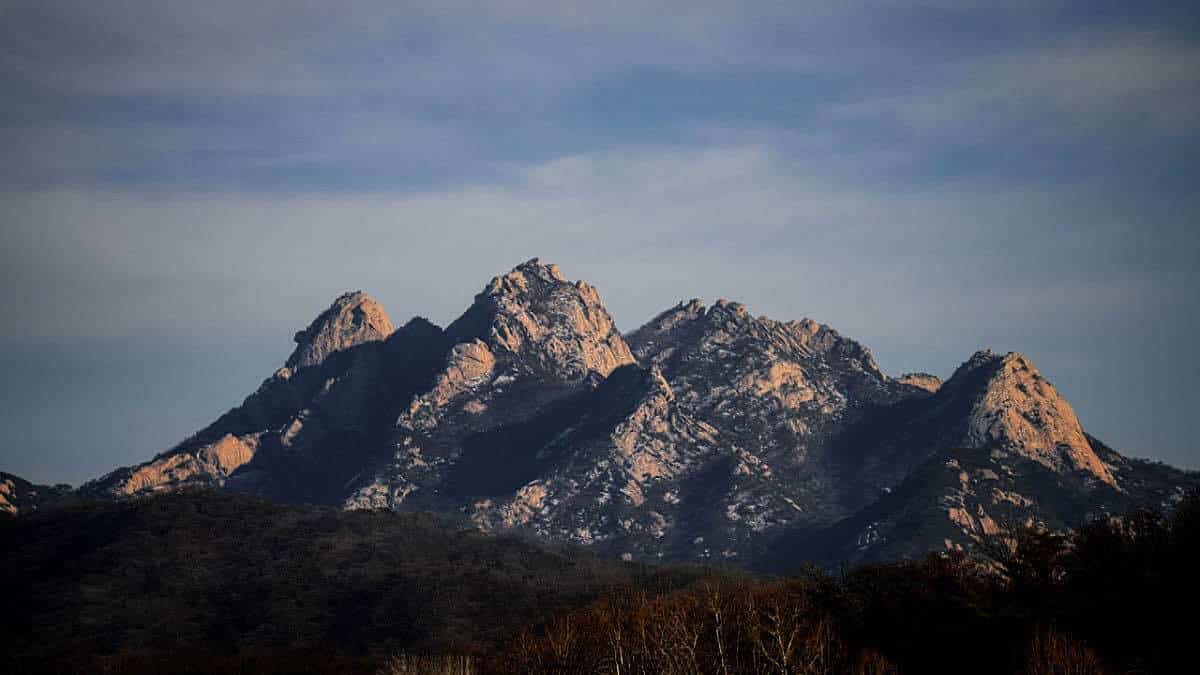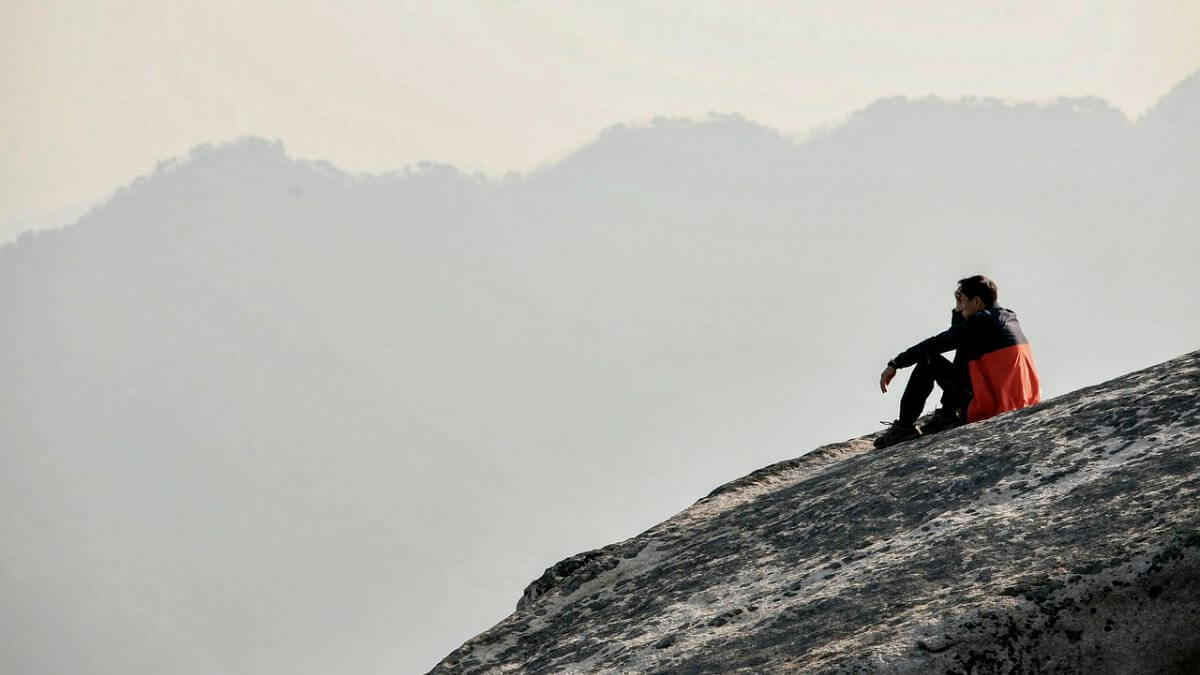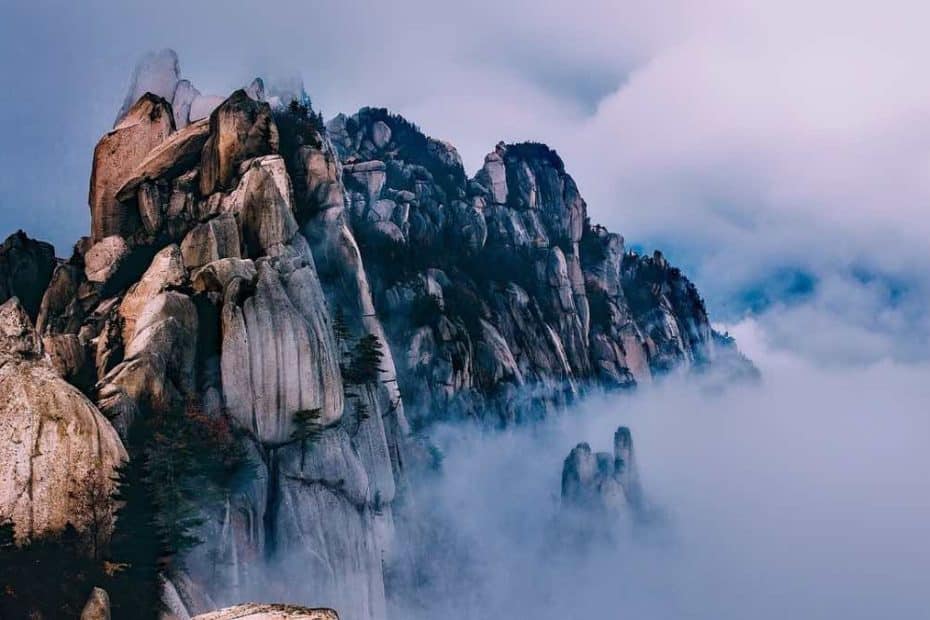Nestled within the breathtaking landscapes of South Korea lies a cherished cultural tradition that captures the essence of the nation’s spirit—hiking. The hills and mountains that adorn this beautiful country serve as a canvas for a vibrant and soulful hiking culture that has been cherished for generations. In this travel blog post, we embark on a journey to explore the unique culture of hiking in South Korea, delving into the customs, traditions, and recommendations that make this experience truly unforgettable.

Korean Hiking Culture
What Locals Do
Hiking in South Korea isn’t just a recreational activity; it’s a way of life. On weekends and holidays, locals of all ages, especially those around 50 and up, flock to the mountains and trails that crisscross the country. For many, it’s a way to reconnect with nature, stay physically active, and socialize with friends and family.
South Koreans take their hiking seriously, and it’s common to see them fully dressed in specialized hiking gear. This often includes high-quality hiking boots, moisture-wicking clothing, UV-protective hats, and trekking poles. The commitment to safety and comfort is evident in their attire.
Popularity of Hiking in Korea
Hiking in South Korea is a social activity, and it is common to see groups of friends, families, and coworkers hiking together. This social aspect of hiking is an important part of South Korean culture, and it is seen as an opportunity to spend time with loved ones, enjoy nature, and promote health and wellness. To go hiking is also an opportunity for self-reflection. It is not uncommon for people to take a break from their busy lives and spend a day or two hiking in the mountains.
The hiking culture in South Korea is well-supported by the government. They have invested in building and maintaining trails. They also promote hiking as a healthy and eco-friendly activity. Hiking trails in the parks and mountains are well-marked and well-maintained, making them safe and accessible for hikers of all levels of experience. There are several hiking clubs and organizations in South Korea that provide information and support for hikers such as hiking guides, gear rental, and shuttle services.
Korean Hiking Essentials
What Locals Bring
When setting out for a hike in South Korea, locals are well-prepared. Here are some common items they bring:
- Hiking Backpack: To carry essentials and store any items collected during the hike.
- Water and Snacks: Staying hydrated is crucial, so water is a must. Locals often pack energy-boosting snacks like dried fruit and nuts.
- Trekking Poles: To assist with balance and stability, especially on steep ascents and descents.
- First Aid Kit: A basic first aid kit for minor injuries.
- Rain Gear: South Korea’s weather can be unpredictable, so it’s wise to carry a lightweight rain jacket.
- Map or GPS: To navigate the trails effectively.
- Sun Protection: Sunscreen, sunglasses, and a wide-brimmed hat to shield against the sun’s rays.
Korean Hiking Experience
One of the most heartwarming aspects of hiking in South Korea is the tradition of sharing food at the summit. Hikers often carry a meal, typically consisting of simple Korean dishes like kimchi, kimbap (rice rolls), and various side dishes. These communal feasts at the peak of a mountain not only nourish the body but also the soul. It’s a chance for strangers to become friends and for families to bond amidst the breathtaking views.

Korean Hiking Destinations
South Korea boasts a diverse range of hiking destinations, each with its unique charm. Here are some of the best mountains to climb and how to get there
Check out this link for more information about the national parks.
Seoraksan
Located in the northeast of South Korea, Seoraksan is one of the country’s most iconic and revered peaks. The nearest city is Sokcho, accessible by bus or a scenic train ride from Seoul. Seoraksan offers a variety of trails, catering to hikers of all levels. The landscape is characterized by lush forests, stunning rock formations, and clear streams.
Bukhansan
For those visiting Seoul, Bukhansan National Park is a convenient and rewarding hiking destination. The park is easily accessible by subway from the city center. Bukhansan offers a range of trails, and the summit provides breathtaking panoramic views of Seoul. This is a popular spot for locals to enjoy nature without leaving the city.
Jirisan
Jirisan, situated in the southern region of South Korea, is known for its challenging hikes and pristine natural beauty. The nearest city is Gurye, and from there, you can take a bus to various trailheads. The vast Jirisan National Park is a hiker’s paradise, with diverse flora and fauna, serene temples, and mesmerizing waterfalls.
Hallasan
Hallasan, located on Jeju Island, is South Korea’s highest peak and offers a unique hiking experience. To reach Jeju Island, you can take a domestic flight from various South Korean cities. Hallasan’s summit hike is a challenging yet rewarding adventure, surrounded by volcanic landscapes, pristine lakes, and alpine vegetation.
Best Hiking Trails in Korea
South Korea offers a wide range of hiking trails, each with its unique beauty and level of difficulty. The “best” hiking trail can vary depending on your preferences, experience level, and the season. Here are some of the most popular and renowned hiking trails in South Korea:
- Seoraksan National Park (Daecheongbong Peak): Seoraksan is one of the most iconic and beloved hiking destinations in South Korea. The Daecheongbong Peak is the highest point in the park and provides breathtaking panoramic views. The park offers various trails suitable for hikers of different skill levels.
- Jirisan National Park (Cheonwangbong Peak): Jirisan is South Korea’s largest national park, known for its stunning landscapes, lush forests, and challenging trails. The hike to Cheonwangbong Peak, the highest in the park, offers a rewarding experience.
- Bukhansan National Park (Baegundae Peak): Located just outside Seoul, Bukhansan is a popular destination for locals and tourists alike. The trail to Baegundae Peak is challenging but super rewarding. It has magnificent views of the city.
- Hallasan National Park (Hallasan): On Jeju Island, Hallasan is South Korea’s highest peak and offers a unique hiking experience. The terrain is volcanic, and the summit hike takes you through diverse ecosystems.
- Namsan Seoul Tower Hike: For a shorter and less strenuous urban hike, you can ascend Namsan Mountain in the heart of Seoul. The hike leads to Namsan Seoul Tower, offering fantastic city views.
- Songnisan National Park (Beopjusa Temple): This park is famous for its ancient temples and stunning scenery. The hike to Beopjusa Temple is a favorite, allowing you to explore historical sites along the way.
- Odaesan National Park (Seonjaryeong Ridge): Odaesan is known for its lush forests and serene landscapes. The Seonjaryeong Ridge trail provides a tranquil hiking experience.
- Gayasan National Park (Haeinsa Temple): The hike to Haeinsa Temple is known for its picturesque beauty. This is the opportunity to visit one of South Korea’s most important Buddhist temples.
- Dinosaur Ridge Trail (Jinan): Located in Jinan County, this unique trail features dinosaur footprints preserved in the rocks. It’s an excellent choice for those interested in both hiking and paleontology.
- Geumjeongsan Mountain (Busan): Geumjeongsan in Busan offers various hiking trails, including a fortress wall hike. The area is rich in history and provides fantastic views of the city and the ocean.
These are just a few of the best hiking trails in South Korea. There are many more waiting to be explored! When choosing a trail, consider your hiking experience, fitness level, and the time of year you plan to visit, as trail conditions and accessibility can vary with the seasons.


Recommendations and Tips
Best Times to Hike
The best times to hike in South Korea are during the spring (April to early June) and autumn (September to early November). These seasons offer mild temperatures, beautiful foliage, and clear skies. Summer can be sweltering, and winter brings cold temperatures and snow, making the trails less accessible.
Respect Local Customs
When hiking in South Korea, it’s essential to respect local customs and practices. Follow the Leave No Trace principles by packing out all your trash, including food scraps, and keep noise levels to a minimum. Additionally, be courteous to fellow hikers and observe any trail regulations.
Conclusion
Hiking in South Korea is not merely an outdoor activity; it’s an immersion into the nation’s culture, spirit, and natural beauty. From the rugged peaks of Seoraksan to the tranquil trails of Jirisan, every hike offers a unique adventure and an opportunity to connect with the welcoming locals who share their love for the mountains.
So, whether you’re an experienced trekker or new to hiking, South Korea’s trails beckon, inviting you to embrace the soulful culture of hiking and create lasting memories amidst its breathtaking landscapes.

Pingback: 10 Best Winter Activities in Seoul | Cheros Abroad